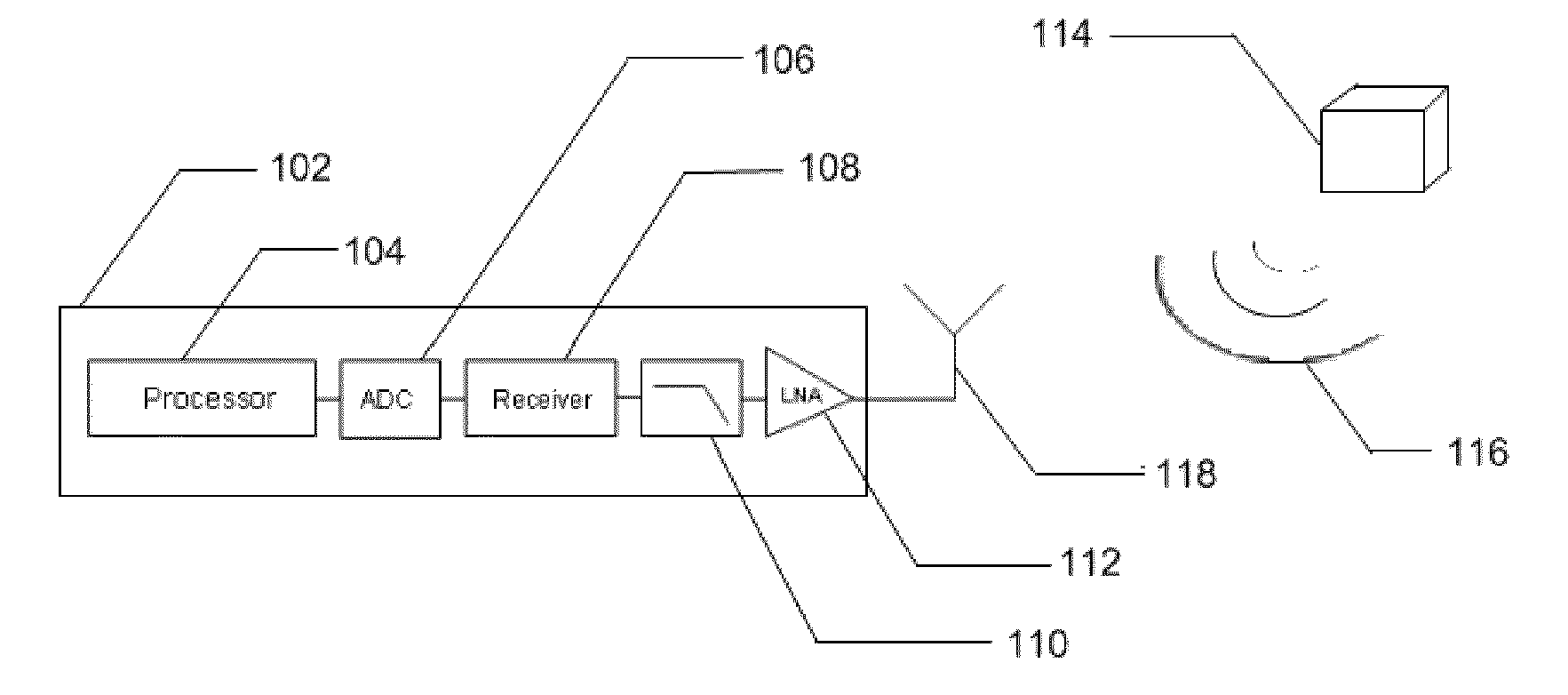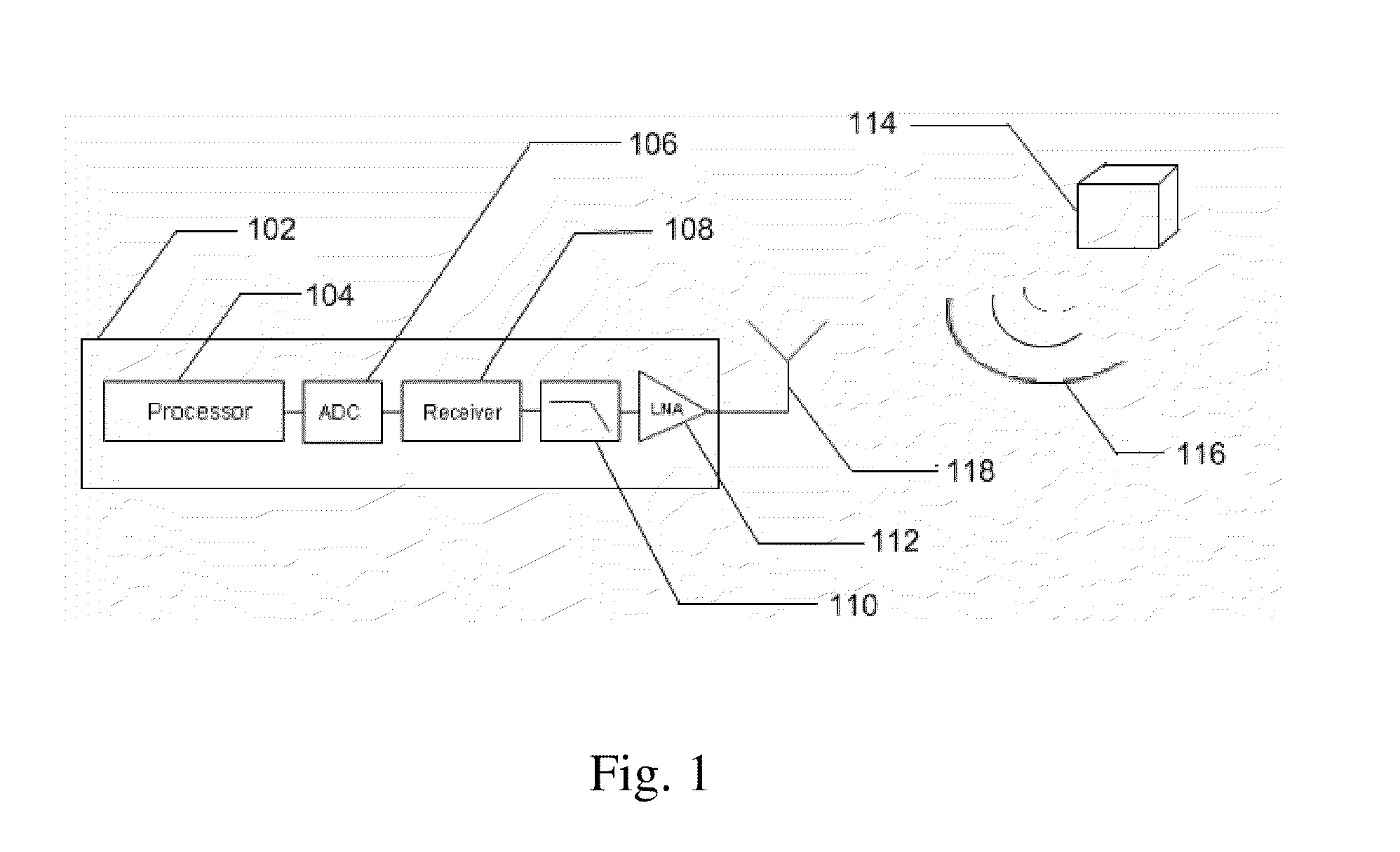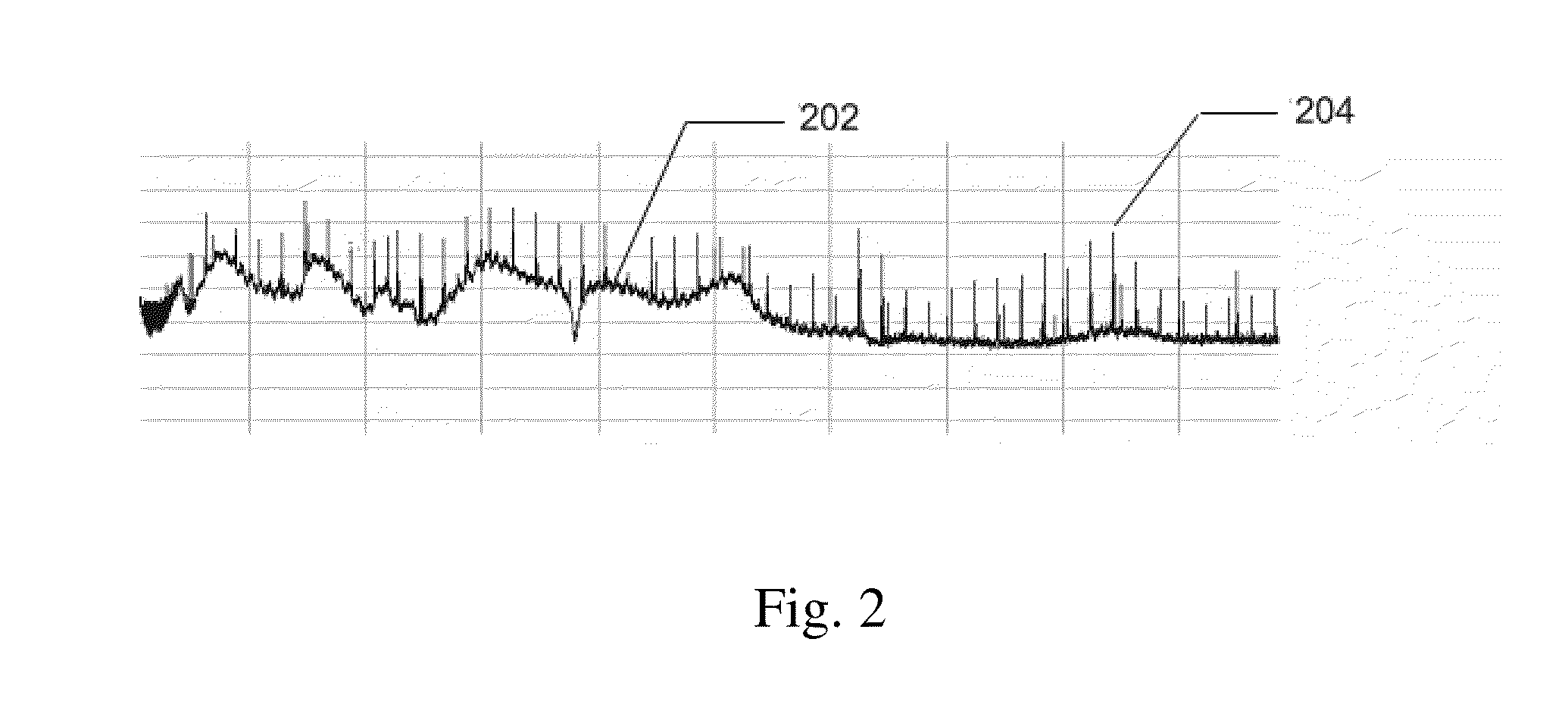Identification and analysis of source emissions through harmonic phase comparison
- Summary
- Abstract
- Description
- Claims
- Application Information
AI Technical Summary
Benefits of technology
Problems solved by technology
Method used
Image
Examples
Embodiment Construction
[0170]Referring now to the drawings, in FIG. 1 there is shown a specific embodiment of a system 102 for the detection of source emissions, specifically the detection of unintentional emission from electronic devices. The system 102 is used to capture electromagnetic emissions with the intention of identifying the existence of an electronic device 114. The system detects electromagnetic radiation 116 which radiates unintentionally from a device 114. The radiation 116 is detected through use of an antenna 118. The detected radiation is amplified above the background noise through use of a low noise amplifier 112 to generate a received signal. The received signal is then filtered 110 to prevent signal aliasing and reduce the noise bandwidth of the signal. The signal is then received 108 to reveal the in-phase (I) and quadrature (Q) components and digitized through the use of an analog-to-digital converter 106. The digitized output is analyzed with a processor 104 to reveal the phase an...
PUM
 Login to View More
Login to View More Abstract
Description
Claims
Application Information
 Login to View More
Login to View More - R&D
- Intellectual Property
- Life Sciences
- Materials
- Tech Scout
- Unparalleled Data Quality
- Higher Quality Content
- 60% Fewer Hallucinations
Browse by: Latest US Patents, China's latest patents, Technical Efficacy Thesaurus, Application Domain, Technology Topic, Popular Technical Reports.
© 2025 PatSnap. All rights reserved.Legal|Privacy policy|Modern Slavery Act Transparency Statement|Sitemap|About US| Contact US: help@patsnap.com



